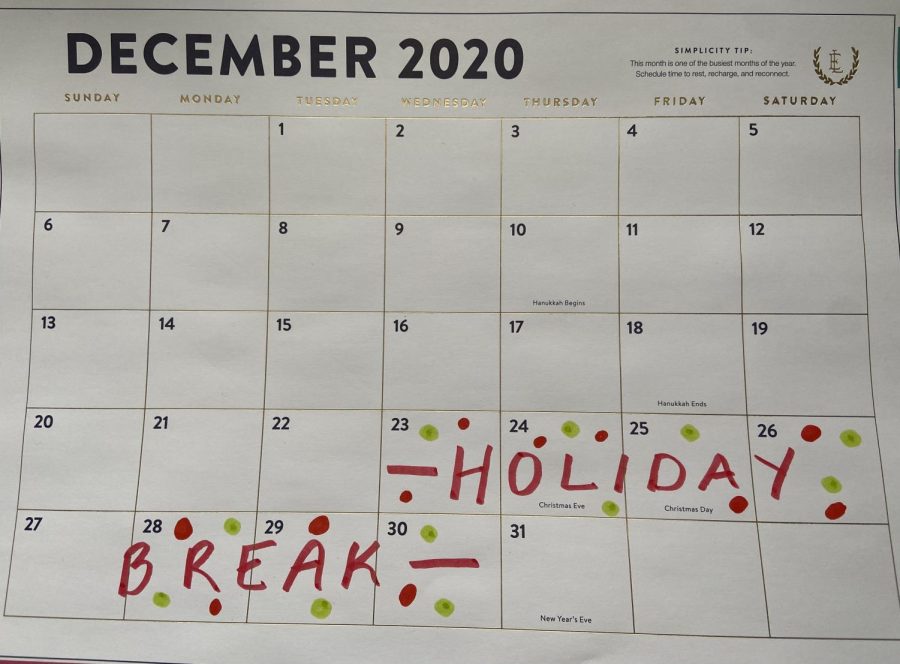Hybrid vs. Fully Remote Learning
With the holiday break, it raises the question: how do students and staff feel about returning after holiday travels?
January 2, 2021
College students coming home for break, last-minute Christmas shopping, winter sports starting, and visiting extended family–any other year these activities would be highly anticipated and normal, but with a surge of coronavirus cases across Massachusetts and in the United States, holiday traveling and returning to school after a break is in question. Scituate High School became familiar with a fully remote schedule for four days before Thanksgiving when positive cases in the school rose uncomfortably high. Did students and teachers enjoy fully remote learning?
Junior Molly Thompson felt “less stressed” with her school work when fully remote, and only saw “positive aspects when at home,” but she missed being able to see her friends. Even after Thanksgiving recess and increased positive cases in the school, Thompson felt safe coming back to school, where masks and six feet social distancing are strictly enforced and followed.
Freshman Casey McKeever thought going remote was practical, so she could have the reassurance of being safe and staying home for the holiday while feeling less at risk. McKeever, like most high school students, took advantage of and enjoyed being able to sleep in, even if it was only 30 minutes. Although the comfort of being in your own home is nice, going fully remote does have its negative impacts. For example, McKeever said that because she’s a freshman, it’s been hard not to be able to “fully connect and socialize with friends and teachers.” Although she sees going remote again in the future, she feels her teachers did an enormously good job with understanding the circumstances, giving her the adequate resources she needed to succeed.
SHS special education teacher Roxanne Griffin found that during the four days of virtual learning her students were more comfortable. In addition, she noticed higher attendance than a normal hybrid schedule day. Griffin “felt like all of the kids were getting the same level of focus from [her] and got the same message as compared to splitting time between cohorts.” Furthermore, she noticed some of her students who were normally less engaged or nervous for in-person learning took advantage of chat features or other online methods of participation to engage in the class. Griffin said, selfishly, she enjoyed the four virtual days because she didn’t have to commute or wear a mask.
As of December 18th, there have been more than 300,000 cases of COVID in Massachusetts, and inevitably that number will only increase. At SHS, winter sports began on December 14th, which naturally implies teammates hang out before and after practices and games, and an increase in susceptibility to positive cases from other towns. Hypothetically, if Scituate played Hingham, and a player from Hingham who unknowingly was positive went to play Quincy the day after, it creates an increased risk of exposure. In addition, college siblings could have come back from different states, eager to hang out with hometown friends, while families are looking to spend time with extended family for the holidays. Would it be smart and safer to go fully remote for a few weeks after Christmas break?
Thompson predicts “sometime in the future we will have to go fully remote,” especially because winter sports are beginning and teams are scheduled to practice over the holiday break. Thompson “loves playing sports and being on a team.” Nevertheless, due to the circumstances this year, she thinks school sports may have not been the best decision. In particular, Thompson was opposed to basketball because of “how close the players are,” putting them at a higher risk of transmitting the coronavirus when exchanging “sweat and bodily fluids.”
To ensure the safety of students, teachers, and administration, McKeever suggests that students and teachers should get tested before coming back to school because “lots of people will be traveling to see family and with an increase in covid patients.” Making sure everyone has tested negative before returning to campus is unlikely and requires a lot of diligence and money; therefore, McKeever thinks it would be safest for students to switch to a fully remote learning model for a few weeks after the holiday break.
Similar to Thompson, McKeever agrees basketball is the most susceptible to positive cases because it has the most “direct contact” and players touch the same ball. As a basketball player herself, McKeever feels safe playing, due to the rules that have changed for precautions and as long as everyone wears their makes and remains diligent to social distancing. Overall, she thinks that winter sports will have an impact on whether or not we stay in school due to the risk that “if a person gets infected and spreads it throughout other teams from other towns,” it could cause the school to close if positive cases rise.
Ms. Griffin said she will be cautious after the holiday break, and we will continue the hybrid teaching model. She also said that winter sports could have a big impact on whether or not we stay in school: “If teams are following procedures, being honest about their results, and following guidelines, hopefully, we can get through the season safely,” she said. Similar to McKeever, Griffin thinks certain sports pose less of a risk than others. Griffin said she worries about “there not being enough oversight on teams to help keep students and communities safe.”
As holiday break comes to an end, it makes students, teachers, and administrators wonder if a fully virtual model will need to be put in place. Nevertheless, SHS students and teachers will be prepared for virtual learning, as our experience last spring and in the days prior to the Thanksgiving recess prepared us to be flexible.
